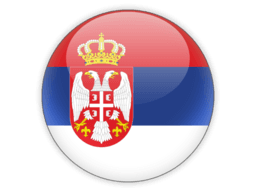
Regions of Serbia
Explore 2 regions
Cities of Serbia
Discover 105 cities across 2 regions
Serbia is a country located in the Balkans region of Southeast Europe. It covers an area of 88,361 square kilometers and has a population of approximately 7 million people. The capital and largest city is Belgrade.
Serbia has a long and complex history, having been part of various empires and kingdoms throughout its existence. It was also a founding member of Yugoslavia, a socialist state that existed from 1945 to 1992. After the breakup of Yugoslavia, Serbia became an independent state in 2006.
Serbia is a parliamentary republic with a president as the head of state and a prime minister as the head of government. The country has a mixed economy, with agriculture, manufacturing, and services sectors all playing important roles. Serbia is also known for its natural resources, including copper, coal, and timber.
The culture of Serbia is diverse and influenced by its history and geography. The Serbian Orthodox Church has played a significant role in shaping the country's cultural heritage, and many historic churches and monasteries can be found throughout the country. Serbia is also known for its traditional music, which includes folk songs and dances.
Tourism is an important industry in Serbia, with visitors coming to explore the country's historic sites, natural beauty, and cultural offerings. Some of the most popular tourist destinations include Belgrade, Novi Sad, and the mountains of Tara and Zlatibor. Additionally, Serbia is home to several UNESCO World Heritage Sites, including the Studenica Monastery and the Medieval Monuments in Kosovo.
Telephone Code
381
Local Emergency Phone
94
Vaccinations
See WHO recommendations
Climate
In the north, continental climate (cold winters and hot, humid summers with well-distributed rainfall); in other parts, continental and Mediterranean climate (relatively cold winters with heavy snowfall and hot, dry summers and autumns)
Currency (Code)
Serbian dinars (RSD)
Electricity/Voltage/Plug Type(s)
230 V / 50 Hz / plug types(s): C, F
Major Languages
Serbian, Hungarian, Bosnian, Romani
Major Religions
Orthodox 84.6%, Catholic 5%, Muslim 3.1%, Protestant 1%, atheist 1.1%, other 0.8% (includes agnostics, other Christians, Eastern, Jewish)
Potable Water
Yes
International Driving Permit
Suggested
Road Driving Side
Right
Tourist Destinations
Novi Sad; Zlatibor; Studenica Monastery; Derdap National Park; Prizren; Kopaonik National Park; Stecci Medieval Tombstones; Gamzigrad-Romuliana, Palace of Galerius; Belgrade (includes Saint Sava Cathedral, Kalemegdan Fortress)
Major Sports
Soccer, basketball, cricket, boxing, baseball
Cultural Practices
There is a strong coffee culture in Serbia. Black coffee ('crna kafa') is served frequently throughout the day.
Tipping Guidelines
Tipping is not obligatory in restaurants, but if you are satisfied with the service then leave a tip of 10-15%. Round up amounts for taxi fares or bar tabs.
Souvenirs
Handmade jewelry, ceramics and pottery, brushwood carvings, sajkaca woolen caps, opanak leather shoes, lacework, woven rugs, Turkish coffee sets, herbal beauty products
Traditional Cuisine
Sarma — rolled cabbage stuffed with minced meat, rice or bulgur, various herbs, red pepper, paprika, ground sumac, or tomato sauce cooked over sauerkraut
Geography
Area
total: 77,474 sq km
land: 77,474 sq km
water: 0 sq km
Climate
in the north, continental climate (cold winters and hot, humid summers with well-distributed rainfall); in other parts, continental and Mediterranean climate (relatively cold winters with heavy snowfall and hot, dry summers and autumns)
Natural resources
oil, gas, coal, iron ore, copper, zinc, antimony, chromite, gold, silver, magnesium, pyrite, limestone, marble, salt, arable land
People and Society
Population
6,693,375 (2023 est.)
Ethnic groups
Serb 83.3%, Hungarian 3.5%, Romani 2.1%, Bosniak 2%, other 5.7%, undeclared or unknown 3.4% (2011 est.)
Languages
Serbian (official) 88.1%, Hungarian 3.4%, Bosnian 1.9%, Romani 1.4%, other 3.4%, undeclared or unknown 1.8%; note - Serbian, Hungarian, Slovak, Romanian, Croatian, and Ruthenian (Rusyn) are official in the Autonomous Province of Vojvodina; most ethnic Albanians boycotted the 2011 census (2011 est.)
Religions
Orthodox 84.6%, Catholic 5%, Muslim 3.1%, Protestant 1%, atheist 1.1%, other 0.8% (includes agnostics, other Christians, Eastern, Jewish), undeclared or unknown 4.5% (2011 est.)
Population growth rate
-0.63% (2023 est.)
Government
Government type
parliamentary republic
Capital
name: Belgrade (Beograd)
Economy
Economic overview
upper middle-income Balkan economy; current EU accession candidate; hit by COVID-19; pursuing green growth development; manageable public debt; new anticorruption efforts; falling unemployment; historic Russian relations; energy import-dependent
Real GDP (purchasing power parity)
$135.534 billion (2021 est.)
Real GDP per capita
$19,800 (2021 est.)
Agricultural products
maize, wheat, sugar beet, milk, sunflower seed, potatoes, soybeans, plums/sloes, apples, barley
Industries
automobiles, base metals, furniture, food processing, machinery, chemicals, sugar, tires, clothes, pharmaceuticals
Exports
$33.726 billion (2021 est.)
Exports - partners
Germany 12%, Italy 10%, Bosnia and Herzegovina 7%, Romania 6%, Russia 5% (2019)
Exports - commodities
insulated wiring, tires, corn, cars, iron products, copper (2019)
Imports
$39.039 billion (2021 est.)
Imports - partners
Germany 13%, Russia 9%, Italy 8%, Hungary 6%, China 5%, Turkey 5% (2019)
Imports - commodities
crude petroleum, cars, packaged medicines, natural gas, refined petroleum (2019)
International Airports in Serbia
Discover 3 major airports serving Serbia
Mark Serbia as Visited
Add Serbia to your personal travel map and track your journey around the world. Share your adventures and see your progress grow!